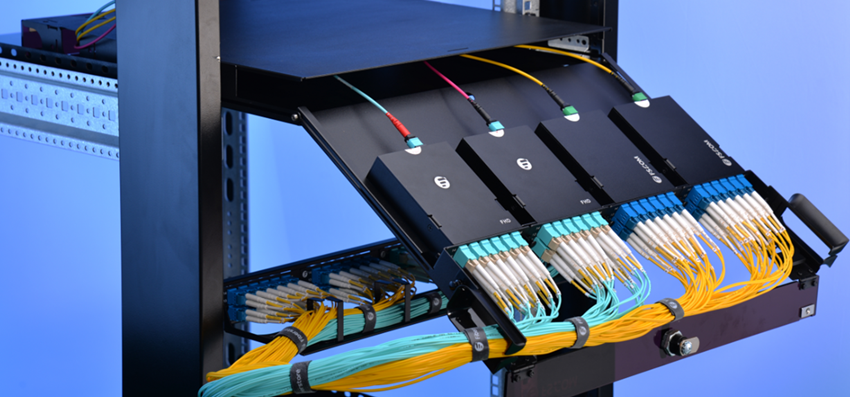Fiber based systems offer apparent advantages over electrical methods in large plants and factories where the harsh environment threatens data reliability and security. Unlike copper cable, fiber optic cabling is resistant to electromagnetic interference (EMI), making it an ideal option for harsh environments involving high voltages or machinery with variable frequency drives, is a safe alternative to traditional wiring.
As you know, fiber optic cable consists of three parts: the core, the cladding, and the coating. The core transmits the light and has a high refractive index. The cladding contains the light within the core because its lower refractive index causes all the light rays to reflect back into the core. This “total internal reflection” or “fiber-optic effect” is the technology’s underlying principle. The coating, usually an acrylate polymer, protects the core/cladding assembly.
Optical fiber is typically made from high-purity silica glass. Plastic fiber of varying configurations is also available. But the attenuation of light energy can approach one thousand times that of glass fiber. The length and integrity of the transmission path and the core/cladding arrangement affect the bandwidth, or the frequency range that the optical fiber transmits. Fiber bandwidth is expressed in megahertz-kilometers (MHz-km).
Depending on the application, the distance involved, and the location, several types of cable configurations and connector types are available. Optical fiber is fragile and must be protected, mostly from mechanical stresses such as bending, crushing, thermal effects, and pulling during installation.
Tight Tube And Loose Tube Cable
A tight-tube (or tight-buffer) design has a PVC coating, which tightly bonds to the fiber, limiting movement. This cable type can have strength members, which you pull through conduit and cable trays. This design, however, has low crush resistance and is susceptible to deformation due to thermal expansion; thus, it is recommended for indoor use only.
A loose-tube design gives a fiber free movement. Each component of the Loose Tube Cables (the sheath or outer coating, the strength member, and the buffer tubes that carry the fibers) has different thermal characteristics. By allowing the fibers and the components surrounding them free movement, deformation is avoided.
Loose-tube construction has much better crush resistance than tight tube because of the buffer-tube protection of the fibers. Loose-tube cables have a strength member, which is used as the pulling member for conduit installation. Loose-tube cables are usually filled with a gel, which surrounds the fibers and increases protection from water. This also improves crash resistance because of the gel’s cushioning effect. You mostly use this cable type for outdoor applications, but you can also use it in harsh industrial environments. A drawback to this type of cable is the difficulty in handling individual fibers. The fiber coating does not have to be as thick as in tight-tube construction; thus, attaching connectors is difficult.
Remember that tight-tube construction does not allow for free movement and provides low protection against mechanical stress. It does, however, have a thick coating for ease of handling. Loose-tube construction, on the other hand, allows free movement and provides a good degree of protection.
Breakout Cable
Breakout cables are a hybrid solution. In a breakout cable, each fiber is treated as a separate unit, complete with a sheath and strength member. This design eliminates the need for a breakout kit, because the sheath lets you attach connectors easily.
Breakout Cable Fiber let fiber subunits move freely, and they protect each fiber by virtue of their thicker coating/strength member arrangement. Each fiber subunit is configured as a tight tube. Breakout cables also come equipped with a separate strength member just like the loose-tube design.
FiberStore harsh environment Fiber Cables is designed and manufactured with specialized components which provide improved performance and protection against damage, breakage, and performance limiting conditions that often exist in harsh environment applications. FiberStore has the resources, expertise, and experience to design, develop, manufacture, install, and maintain a product ideally suited for your exact application.










